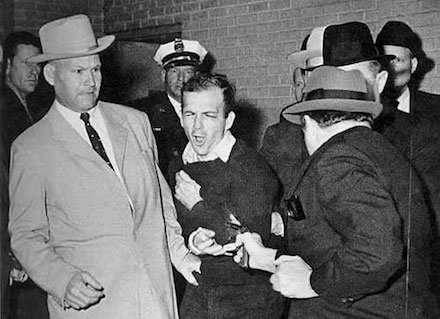On this date in 1942, the Japanese military occupying the atoll of Tarawa beheaded 17 New Zealand Coastwatchers, along with five civilians.
Tarawa, a fishhook-shaped atoll that belongs to the Republic of Kiribati, was one of many specks of South Pacific land to which Australia and New Zealand deployed World War II Coastwatchers.
These small teams of mixed civilian and service personnel, as well as locals, kept up 24-hour watch for Japanese naval movements.* The tips provided by coastwatchers in the Solomon Islands during the Guadalcanal campaign led Vice Admiral William Halsey to exclaim that “the coastwatchers saved Guadalcanal, and Guadalcanal saved the Pacific.”
But their lonely forward positions also potentially exposed coastwatchers to considerable danger.
Even as Guadalcanal was unfolding in August and September in 1942, Japan was fortifying the occupied Gilbert Islands** (present-day Kiribati) in the wake of the Makin Island raid. Seventeen coastwatchers in the Gilberts were swept up in the process, and transferred to Tarawa along with five civilians (three British, one Australian, and one New Zealander). There they were held at the atoll’s old lunatic asylum, on the islet of Betio.
On Oct. 15, Allied planes bombed Tarawa. One of the captives got loose and ran onto the beach, frantically trying to signal the bombers. Instead, the Japanese — who fretted prisoners on their occupied islands becoming a fifth column in the event of an attack — summarily executed not only the signaler but all their captives.
“I saw the Europeans sitting in line,” one Tarawa local remembered later.
One Japanese started to kill the Europeans. He cut off the head of the first European, then the second, then the third, then I did not see any more because I fainted. When I came to, I saw the Japanese carrying the dead bodies to two pits.
In November 1943, a U.S. amphibious invasion took back the island at the bloody Battle of Tarawa. Twelve hundred Americans, and several times that many of the island’s Japanese defenders and Korean war slaves, were slain.
Old gun emplacements from that battle — as well as a monument to the New Zealand coastwatchers — can still be found on Tarawa.†
Catch these sights while they last. The average height above sea level for Kiribati is two meters, making global climate change liable to send the nation’s scattered islands to Atlantis. Kiribati residents have already begun turning up in Australia and New Zealand as climate change refugees.
* When the occasion arose, coastwatchers also rescued stranded Allied servicemen. After LTJG John F. Kennedy’s torpedo boat was rammed by a Japanese aircraft carrier in August 1942, it was a pair of Solomon Island natives dispatched by an Australian coastwatcher who found the future U.S. President and his surviving crew.
** Seven other coastwatchers besides those beheaded this date had been captured in the Gilberts when Japan first (but lightly) occupied it following Pearl Harbor. They survived the war as POWs in mainland Japan.
† There was a monument to the dead coastwatchers from shortly after the war. The remains of the seventeen, however, were long neglected by the New Zealand government, and have only recently been turned up … by Americans scouring Betio for casualties from the Battle of Tarawa.
On this day..
- 1948: Arthur Eggers, by Earl Warren
- 1794: Robert Watt, British Conventioner
- 1660: John Carew, regicide
- 1767: Tom, slave of the Baylor family
- 1937: Panfiliya Tanailidi, Azerbaijani actress
- 1651: James Stanley, Earl of Derby
- 1940: Lluis Companys, Catalan president
- 2012: Eric Robert, determined volunteer
- 1964: Nguyen Van Troi, Viet Cong urban guerrilla
- 1942: Three Doolittle raiders
- 1896: Rainandriamampandry and Prince Ratsimamanga
- 1917: Mata Hari, femme fatale
- Themed Set: Belles Epoque




 At 3 a.m. this date in 1969 at a Nairobi prison that Nahashon Isaac Njenga Njoroge swung for assassinating Kenyan Luo politician
At 3 a.m. this date in 1969 at a Nairobi prison that Nahashon Isaac Njenga Njoroge swung for assassinating Kenyan Luo politician 

